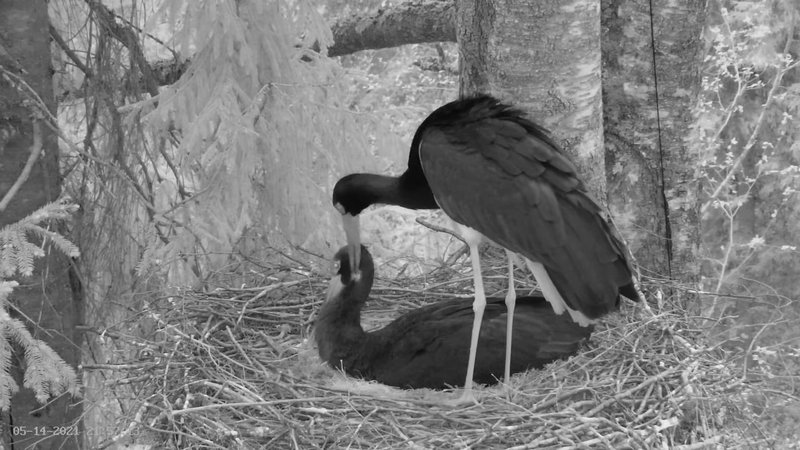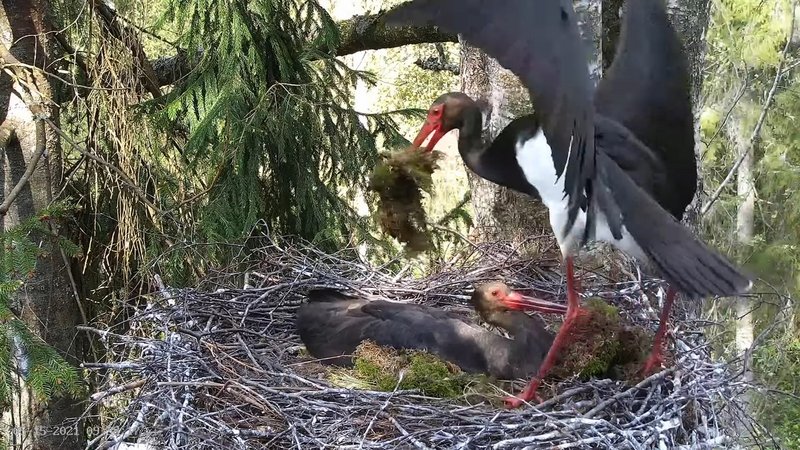Black Stork Nest 2, Jan and Janika, 2021
-
Solo
- Registered user
- Posts: 23861
- Joined: October 19th, 2015, 7:18 pm
-
Solo
- Registered user
- Posts: 23861
- Joined: October 19th, 2015, 7:18 pm
-
Solo
- Registered user
- Posts: 23861
- Joined: October 19th, 2015, 7:18 pm
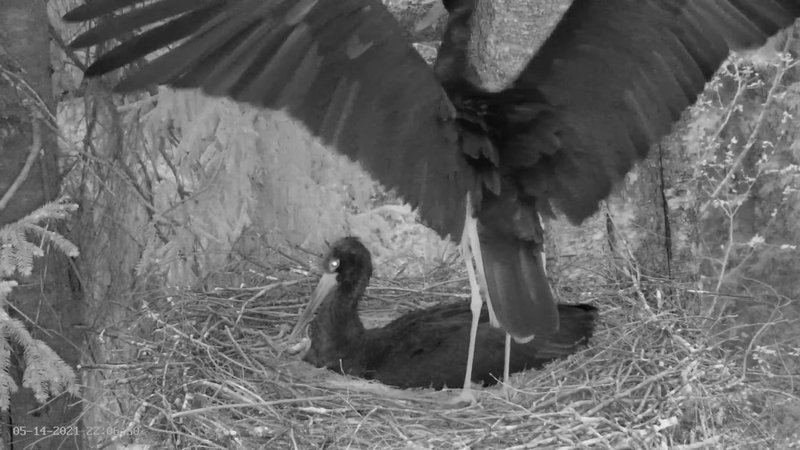
and the next stand up (22:06:58 )
22:08:58 back incubating after pooping, eggs rolling and digging the nest-bowl
and preening continued (he - her)
22:11:13 she stand up, both preening, 22:13:09 she back incubating and preening continued


- juta
- Site Admin
- Posts: 5734
- Joined: September 25th, 2008, 1:52 pm
- Location: Tallinn, Estonia
Hello all!
You can vote names until Monday early morning
http://www.looduskalender.ee/forum/view ... 63#p799451
You can vote names until Monday early morning
http://www.looduskalender.ee/forum/view ... 63#p799451
Proud member of SHoW (StorkaHolics of the World)
-
Solo
- Registered user
- Posts: 23861
- Joined: October 19th, 2015, 7:18 pm
May 15
Hello everyone
female out at 04:56:52
male is incubating
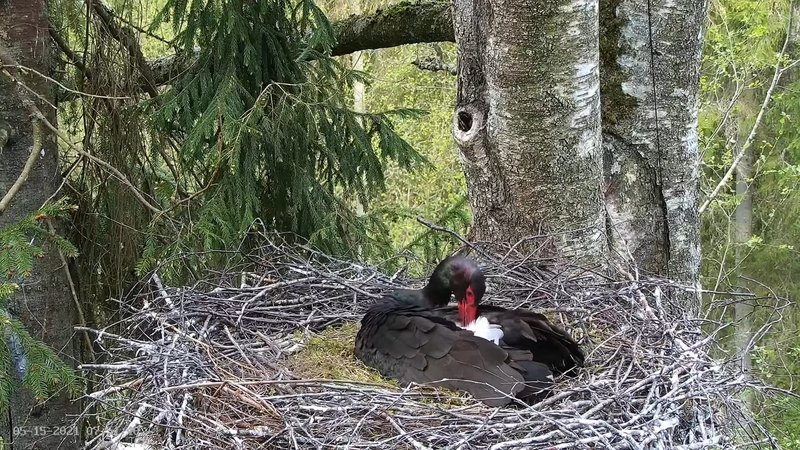
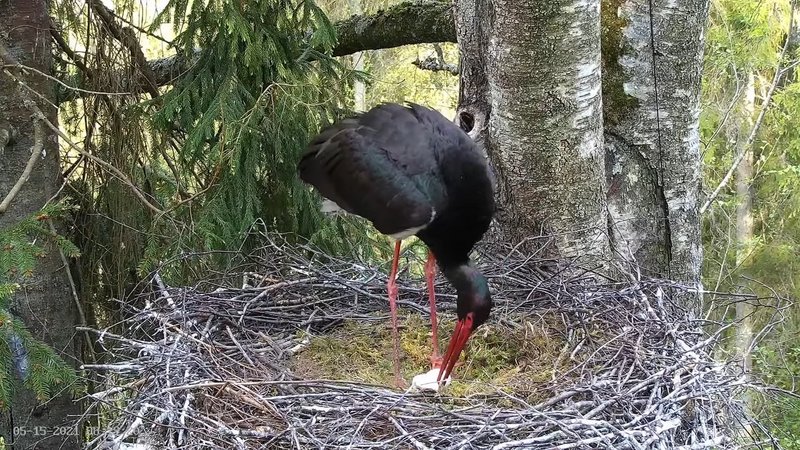
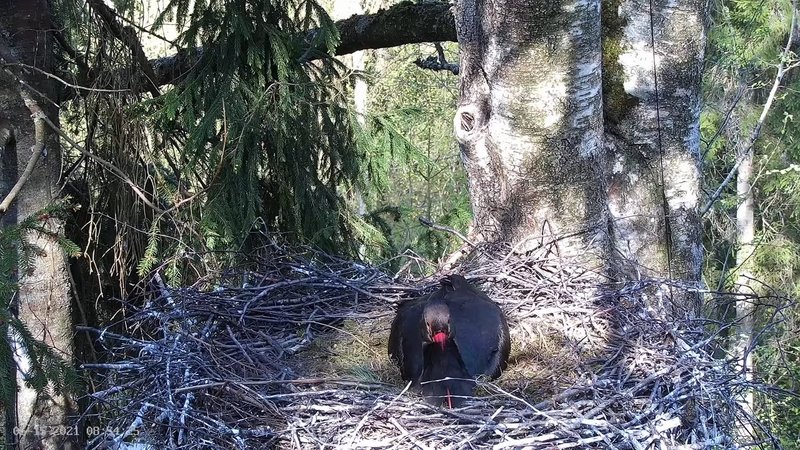
EDIT:
09.17 female is back with straw
EDIT 2
male flew out and in with new moss - repeatedly , there is now one moss bed
, there is now one moss bed
Hello everyone
female out at 04:56:52
male is incubating



EDIT:
09.17 female is back with straw
EDIT 2
male flew out and in with new moss - repeatedly
-
Solo
- Registered user
- Posts: 23861
- Joined: October 19th, 2015, 7:18 pm
-
Solo
- Registered user
- Posts: 23861
- Joined: October 19th, 2015, 7:18 pm
and still there is not enough moss 
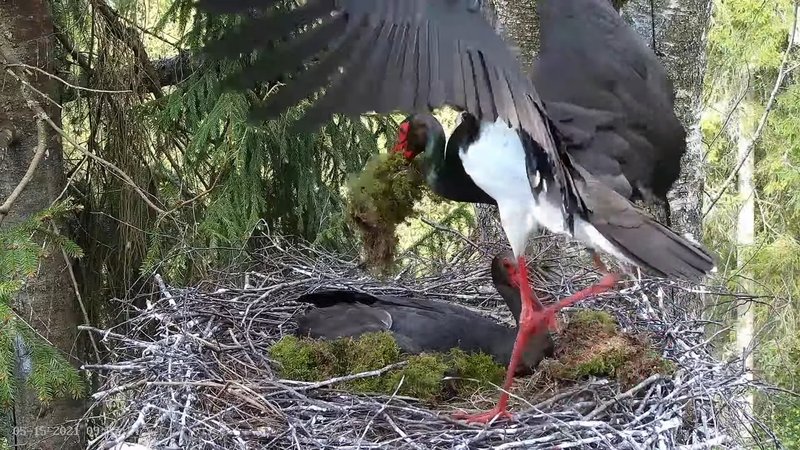
if it continues like this, we will have no chance to see into the nest bowl
moss with flower
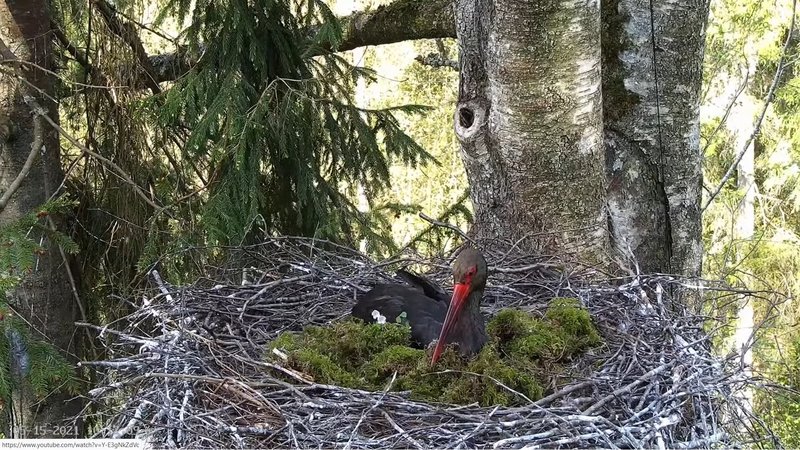
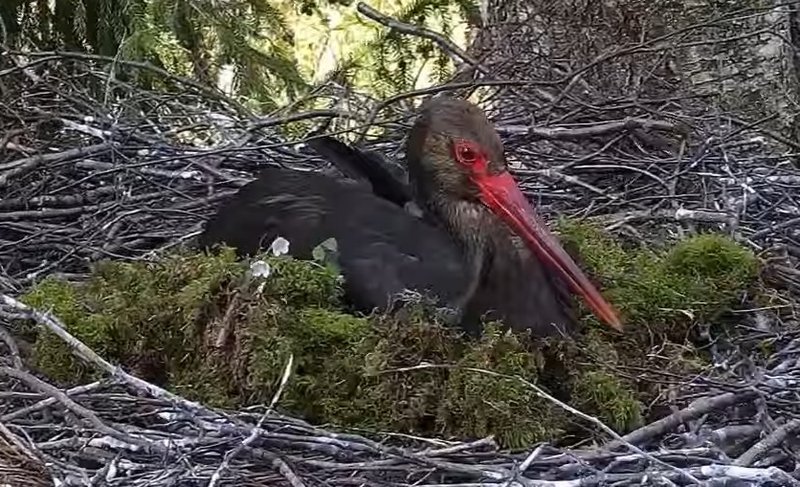

if it continues like this, we will have no chance to see into the nest bowl
moss with flower


-
Solo
- Registered user
- Posts: 23861
- Joined: October 19th, 2015, 7:18 pm
Anne7 wrote: ↑May 14th, 2021, 9:27 pm Solo, could you please post the link (the source), where prof. P. Zieliński emphasises that:
1. Storklets need to strengthen outside the nest (for some weeks)
2. Storklets need to find the (right) company for their first journey
It looks as if prof. Zieliński and prof. Maris Strazds (+ Wolfgang Fiedler + Hans-Günther Bauer) disagree on this matter.....
it would not be the first time (and not the last) that world-renowned experts have different opinions, but this is not the case - see the first part of my sentence
prof. P.Z. wrote this on one polish chat on May 6 - he answered to one lady:Solo wrote: ↑May 14th, 2021, 6:15 pm ... they need not only to fly out from the nest happily (not left by the adults and well fed), but also to strengthen outside the nest (some weeks) and find the (right) company for a challenging journey. ... (and there are other several very important aspects, but that would be too long contribution) ...
9:37 PM Piotr Zieliński
@Ania Nawrocka bardziej chodzi o to, żeby były dobrze odżywione w gnieździe i po wylocie zdażyły sie przygotować do wędrówki. To im zajmuje kilka tygodni/
it is more about being well-nourished in the nest and getting ready for the journey after leaving. It takes them several weeks /
btw. we know e.g. that Upene -Ziluka stayed on the river Olša (CZ-PL border) from 26.08.2015 to 13.09.2015 - 19 day, approx. 3 weeks and also we have documented information - she stayed there in mixed small group with adults and and young storks
9:58 PM Piotr Zieliński
@Ania Nawrocka - opierają sie na doświadczeniu innych, które znają trasę. A same zapamiętują trasę (uczą się) i w kolejnym roku więdzą gdzie lecieć.
based on the experience of others who know the route. And they remember the route themselves (they learn) and in the next year they know where to fly.
- aquiline
- Registered user
- Posts: 513
- Joined: June 18th, 2016, 11:01 pm
- Location: Cologne Germany
What a beautiful nest 
Many thanks to everybody for pictures and comments
Many thanks to everybody for pictures and comments
-
Solo
- Registered user
- Posts: 23861
- Joined: October 19th, 2015, 7:18 pm
11.57 male arrived, 10.58 female out

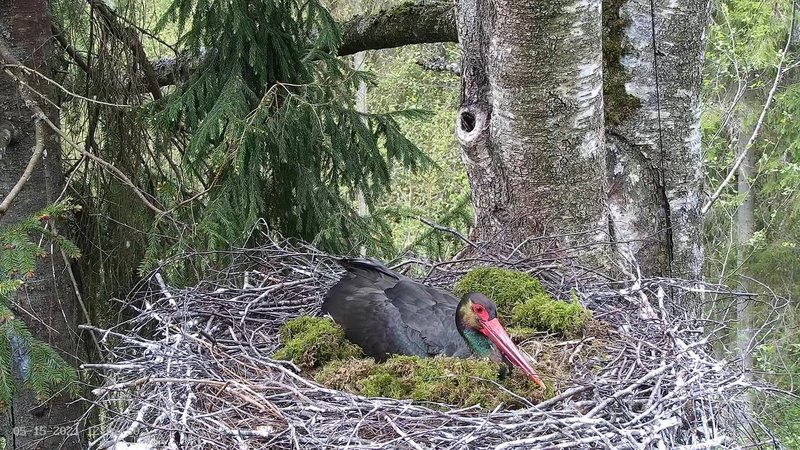


-
Solo
- Registered user
- Posts: 23861
- Joined: October 19th, 2015, 7:18 pm
12.04 female in with straw



and out (12.07)



and out (12.07)

-
Solo
- Registered user
- Posts: 23861
- Joined: October 19th, 2015, 7:18 pm
-
Solo
- Registered user
- Posts: 23861
- Joined: October 19th, 2015, 7:18 pm
12.18 she is back with next straw


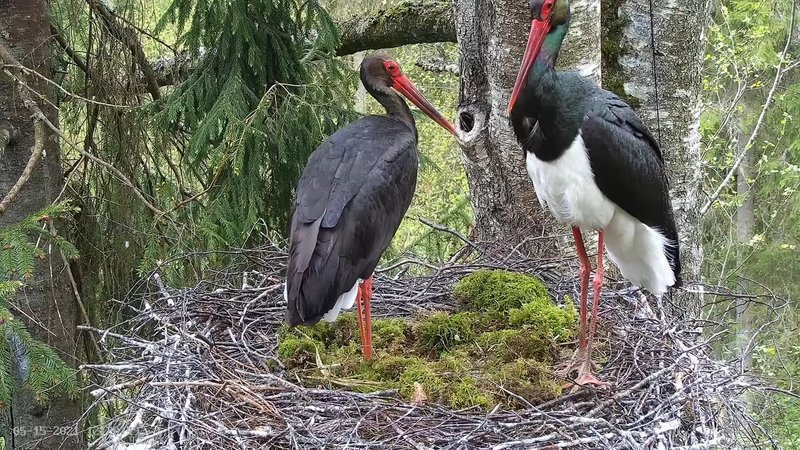
12.22 female out (this time she flew to the right)
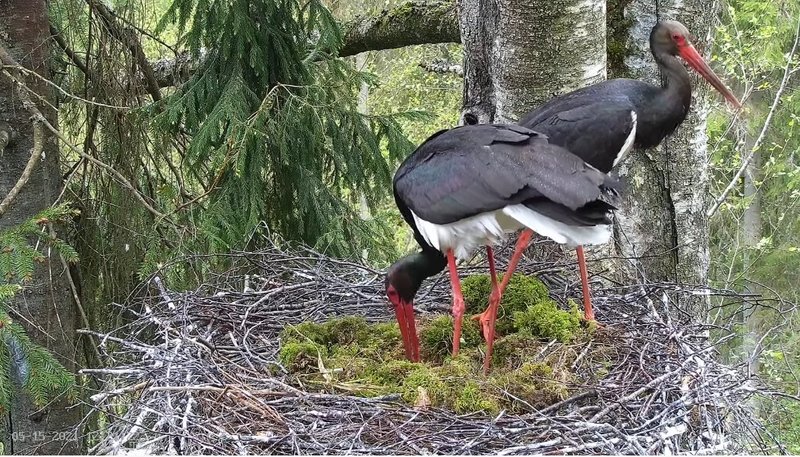


12.22 female out (this time she flew to the right)

-
Solo
- Registered user
- Posts: 23861
- Joined: October 19th, 2015, 7:18 pm
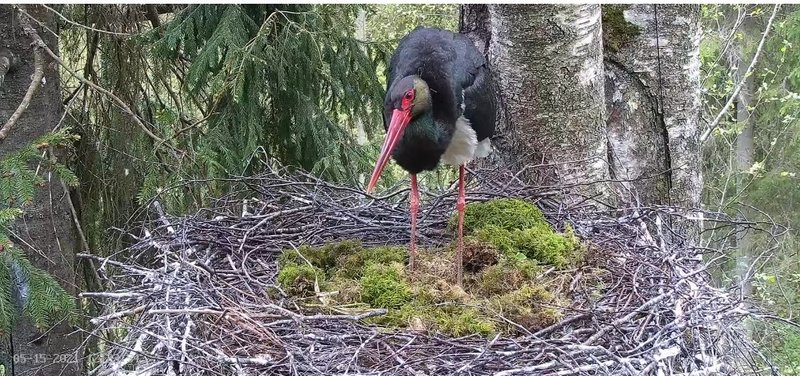
12.30 it starts raining
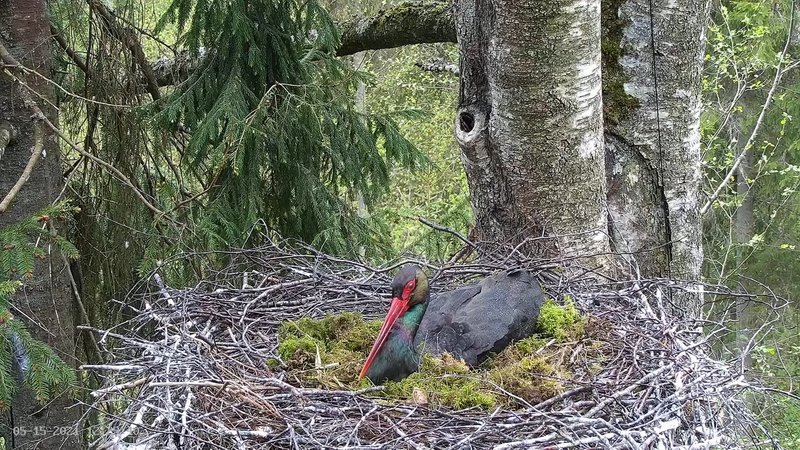

-
Solo
- Registered user
- Posts: 23861
- Joined: October 19th, 2015, 7:18 pm
13.24 it's raining harder (not very hard)
13.34 the rain is over (maybe)
he digs the nest-bowl nice around (during that - 15 min. - he withered)

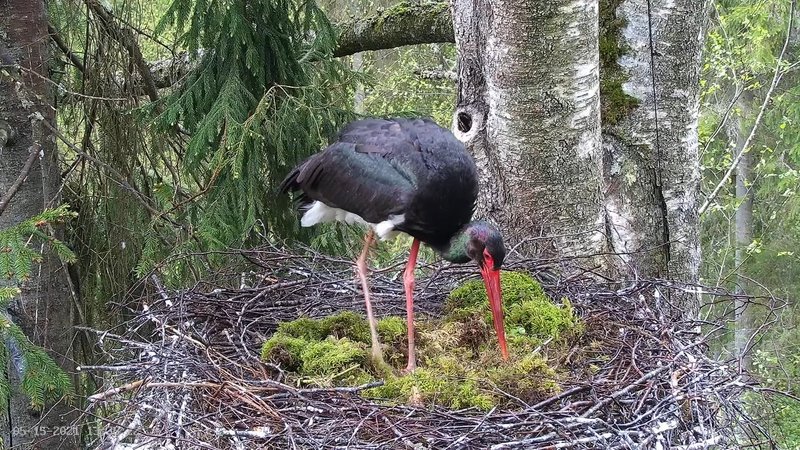
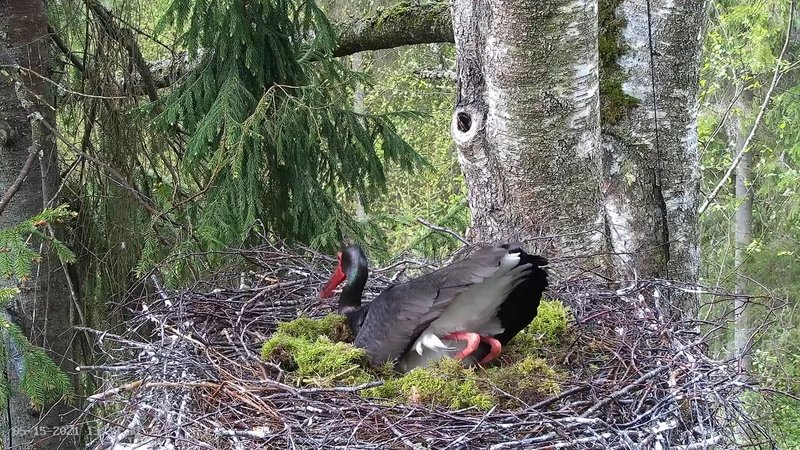
13.34 the rain is over (maybe)
he digs the nest-bowl nice around (during that - 15 min. - he withered)



-
Solo
- Registered user
- Posts: 23861
- Joined: October 19th, 2015, 7:18 pm
13.5? female in, short nest digging and settled down incubating (male - preening)
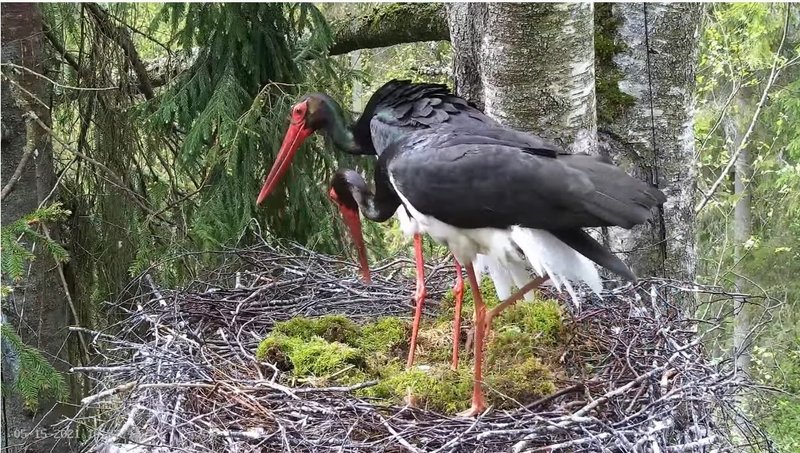

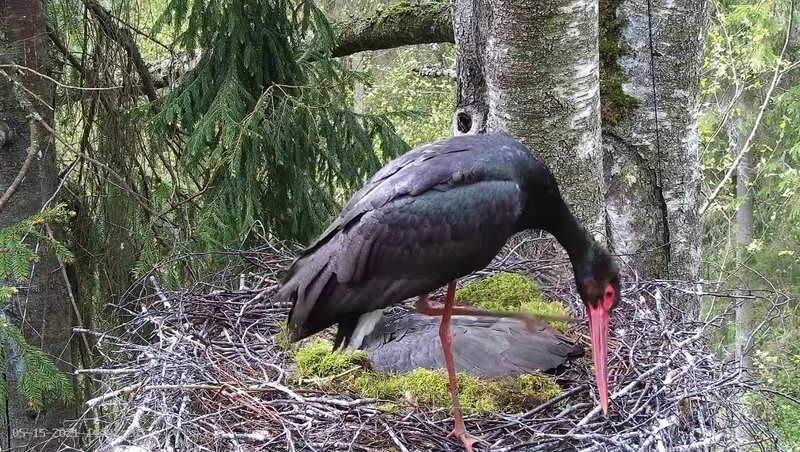



-
Sabsy
- Registered user
- Posts: 301
- Joined: May 2nd, 2021, 10:27 am
- Anne7
- Registered user
- Posts: 10600
- Joined: April 15th, 2016, 3:26 pm
- Location: Belgium
Solo wrote: ↑May 15th, 2021, 10:49 amAnne,
it would not be the first time (and not the last) that world-renowned experts have different opinions, but this is not the case - see the first part of my sentence
prof. P.Z. wrote this on one polish chat on May 6 - he answered to one lady:
9:37 PM Piotr Zieliński
@Ania Nawrocka bardziej chodzi o to, żeby były dobrze odżywione w gnieździe i po wylocie zdażyły sie przygotować do wędrówki. To im zajmuje kilka tygodni/
it is more about being well-nourished in the nest and getting ready for the journey after leaving. It takes them several weeks /
btw. we know e.g. that Upene -Ziluka stayed on the river Olša (CZ-PL border) from 26.08.2015 to 13.09.2015 - 19 day, approx. 3 weeks and also we have documented information - she stayed there in mixed small group with adults and and young storks
9:58 PM Piotr Zieliński
@Ania Nawrocka - opierają sie na doświadczeniu innych, które znają trasę. A same zapamiętują trasę (uczą się) i w kolejnym roku więdzą gdzie lecieć.
based on the experience of others who know the route. And they remember the route themselves (they learn) and in the next year they know where to fly.
Thanks for your reaction, Solo.
Unfortunately, this is not the clear information I had hoped for.
It’s a pity that there’s no link to a paper or article written by Prof. P. Zieliński.
I just read here two excerpts from a Polish chat, where neither the context nor the original questions have been mentioned.
Solo, I’m afraid we don't understand each other clearly.
Now you suddenly write that P. Zieliński and M. Strazds do not disagree: “…experts have different opinions, but this is not the case…”
Nevertheless, I see conflicting information. These experts only seem to agree on the 1st of the 3 statements (according to your claims, see below). That’s interesting.
Because this is about important BS behaviour, I would like us to clarify the matter.
So let me try again. Please let’s examine each of the 3 below statements separately.
You wrote:
“As emphasized by prof. P. Zieliński they need not only (1) to fly out from the nest happily (not left by the adults and well fed), but also (2) to strengthen outside the nest (some weeks) and (3) to find the (right) company for a challenging journey. ...”
So you claim that prof. P. Zieliński emphasises 3 things:
1. juveniles need to leave the nest well fed
2. (after leaving the nest) juveniles need to strengthen outside the nest (for some weeks)
3. (after leaving the nest) juveniles need to find the (right) company for their first migration
1. juveniles need to leave the nest well fed
As I wrote in my previous post, everyone seems to agree with this statement.
Body weight and time spent on the nest have a significant impact on their migratory success.
The longer a storklet stays on the nest and the longer it is well fed by its parents on the nest, the more likely it is to migrate successfully
This is (according to your claims) the only statement on which P. Zieliński, M. Strazds, W. Fiedler, G. Bauer, and on this forum also U. Sellis, clearly agree.
2. (after leaving the nest) juveniles need to strengthen outside the nest (for some weeks)
Here P. Zieliński and M. Strazds clearly disagree (according to your claims).
According to M. Strazds, juveniles do not need to strengthen outside the nest (for some weeks).
On the contrary, he writes: "most successful birds left their nests late and started the southward migration straight from the nest."
It is, of course, known that some storklets do indeed stay in the (wider) nest area - for a few days to even a few weeks - before starting their migration. These are possibly youngsters that left the nest a little too early and/or are too skinny (not well-fed) to start their migration straight away.
The 5 Estonian juveniles (Maru, Païke, Karula, Oru and Aru) that received a transmitter (and were therefore closely observed) started their migration immediately after leaving the nest.
3. (after leaving the nest) juveniles need to find the (right) company for their first migration
This is in my opinion the most important contradiction. P. Zieliński and M. Strazds clearly disagree on this matter (according to your claims)
M. Strazds writes clearly: “Contrary to many migratory species, Black Stork is a solitary traveller.”
Solo, how should juveniles, who start their migration straight from their nest, find the (right) company for their first journey? And (assuming they need companionship) why would they never travel with their parents and/or siblings, but instead look for other suitable company? And where are they supposed to find that suitable company - especially in countries where very few BS live ?
This sounds illogical to me.
M. Strazds wrote: “Typical migration consists of comparatively short bursts of flight days interspersed with longer foraging stops” and “The most important factor affecting success of travel appears to be longevity of stay at the most important foraging stops rather than number of sites they explore.”
It is not because they encounter other BS along the way, at these important stopover places, that they also travel all the way together. Possibly, they may fly for a while with one or another (mixed) group, but then separate again at the next stopover. It is also known that adult BS and juveniles have different flight behaviour during migration. Traveling together would not be beneficial to either. (Young Black Storks tend to make longer and more frequent stopovers during their autumn migration than adults, the latter flying shorter daily distances and spreading their migration time over a greater number of days of active flying - Jadoul et al, 2003)
As you know, the first, and thus most difficult migration is basically done on their innate idea of the ‘flight path’. Even scientists are still not 100% sure about how exactly this works, but migratory birds seem to have a number of built-in navigational instruments: a ‘compass’, a ‘clock’ and a ‘map’.
It is known that afterwards, from their second migration on, juveniles also rely on acquired knowledge of the route (memory). M. Strazds wrote: "Those birds that made a backward migration visited most of the sites they had explored earlier, however, with different travel routes between the stops."
What Makes a Successful Migrant?
Lessons from a Five Year Tracking Project of a Long Distance Migratory Species
Source: http://forestiersdumonde.org/wp-content ... t-Book.pdf
VII INTERNATIONAL CONFERENCE ON BLACK STORK Ciconia nigra
Part 4. Movements, Tracking, Ringing & Migration of Black Stork, page 34
Stay with the family or go alone?
Mélanie Larue, Mathieu Boos, Christian Brossard, François Baillon, Jean-Jacques Boutteaux, Jérôme Bernard, Paul Brossault, Odile Petit & Damien Chevallier
ABSTRACT: For many migratory species, social interactions on migration are poorly known, particularly the extent to which brood siblings remain together, at least during their first post-fledging migration. This study tested the assumption that Black Stork siblings stay together during migration and is the first time that juveniles from the same brood of a Palearctic sub-Saharan migratory stork species have been tracked on migration. Four juveniles from the same brood were followed by satellite tracking, and each dispersed or migrated in a completely different direction to its siblings. The results thus refute the idea that Black Stork siblings remain together on their first migration, but to confirm these new findings, it is important to repeat the study using additional nests.
http://www.tandfonline.com/doi/full/10. ... 16.1190616
“Clearly, animals know more than we think, and think a great deal more than we know.”
— Irene Pepperberg
— Irene Pepperberg
- Liz01
- Registered user
- Posts: 73387
- Joined: January 21st, 2014, 2:06 pm
- Location: Germany
- Liz01
- Registered user
- Posts: 73387
- Joined: January 21st, 2014, 2:06 pm
- Location: Germany
17:54 Female came home
they greeting are each other


and preening

they greeting are each other


and preening



